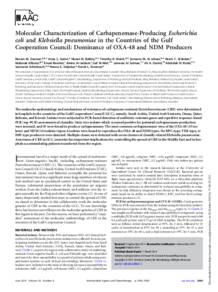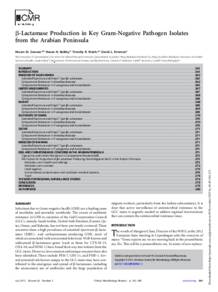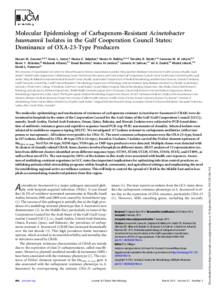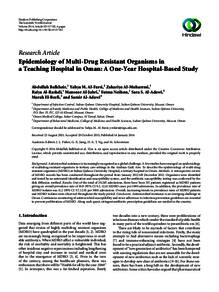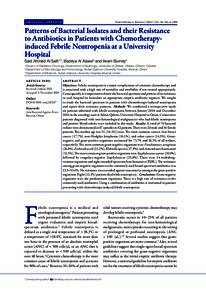Document
Molecular characterization of carbapenemase-producing escherichia coli and klebsiella pneumoniae in the countries of the Gulf Cooperation Council : dominance of OXA-48 and NDM producers.
Identifier
DOI: 10.1128/AAC.02050-13
Contributors
Sartor, Anna L., Author
Balkhy, Hanan H., Author
Walsh, Timothy R., Author
Al-Johaniyah, Sameera M., Author
Al-Jindan, Reem Y., Author
Al-Faresi, Mubarak., Author
Ibrahim, Emad., Author
ِAl-Jardaniyah, Amina., Author
Al-Abri, Seif., Author
Al-Salman, Jameela., Author
Dashti, Ali A., Author
Kutbi, Abdullah H., Author
Schlebusch, Sanmarié., Author
Sidjabat, Hanna E., Author
Paterson, David L., Author
Publisher
American Society for Microbiology.
Gregorian
2014-03
Language
English
Subject
English abstract
The molecular epidemiology and mechanisms of resistance of carbapenem-resistant Enterobacteriaceae (CRE) were determined in hospitals in the countries of the Gulf Cooperation Council (GCC), namely, Saudi Arabia, United Arab Emirates, Oman, Qatar, Bahrain, and Kuwait. Isolates were subjected to PCR-based detection of antibiotic-resistant genes and repetitive sequence-based PCR (rep-PCR) assessments of clonality. Sixty-two isolates which screened positive for potential carbapenemase production were assessed, and 45 were found to produce carbapenemase. The most common carbapenemases were of the OXA-48 (35 isolates) and NDM (16 isolates) types; 6 isolates were found to coproduce the OXA-48 and NDM types. No KPC-type, VIM-type, or IMP-type producers were detected. Multiple clones were detected with seven clusters of clonally related Klebsiella pneumoniae. Awareness of CRE in GCC countries has important implications for controlling the spread of CRE in the Middle East and in hospitals accommodating patients transferred from the region.
Member of
ISSN
0066-4804
Resource URL
Category
Journal articles

